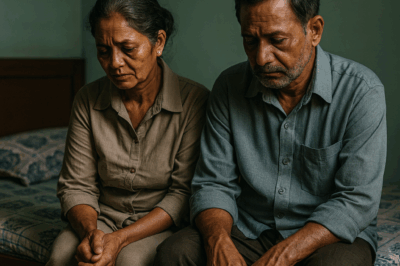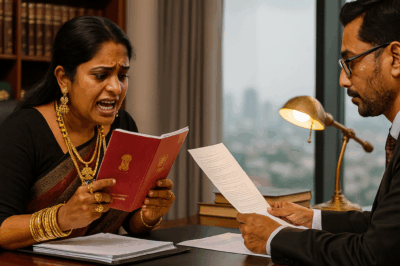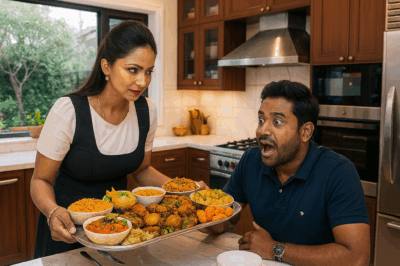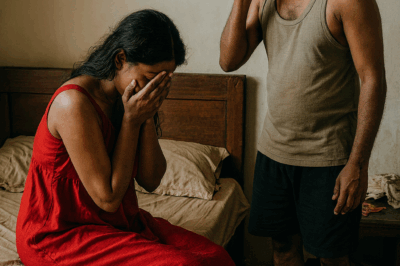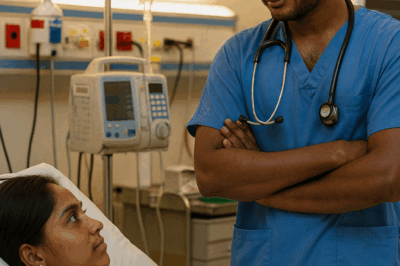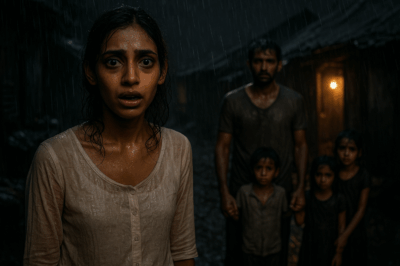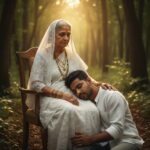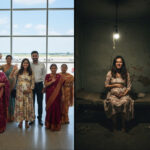“Two Children, One Head – A Miraculous Journey That Moved a Nation”
That night, in a cramped clinic tucked inside a narrow alley off Kolkata’s Rabindra Sarani, the ultrasound machine had barely gone silent when Meera stopped breathing for a second.

The doctor looked up and spoke gently, but his words hit like thunder: “Twins… but conjoined at the head.”
Her vision blurred, panic gripped her chest, and the doctor’s voice became a distant hum — soft but unbearably heavy, like a lightning strike crashing into her life.
On the way home, she clutched the scan in her hand, trembling as though she were holding the destiny of two fragile souls.
But when she stepped into the tiny, aging apartment she shared with her in-laws, her heartbeat was drowned out by a storm of objections.
Her husband’s family insisted she terminate the pregnancy. Her mother-in-law wept, calling it karma, a shame. Her husband, Rakesh, quietly packed his belongings and left — without a single word.
That was the moment Meera knew: she was now walking a path alone.
But even alone, she wouldn’t give up. She accepted everything — loss, poverty, judgment.
She moved out, renting a small room near a hospital. To survive, she did whatever she could: washing dishes, carrying loads, doing laundry. People stared, whispered — but she didn’t care.
At night, she would lie down and listen to two heartbeats within her — two rhythms, fused by fate, like twin melodies in a single, haunting symphony.
At seven and a half months, doctors rushed her into surgery. The amniotic fluid was nearly gone, the twins were in distress.
Without hesitation, she signed the consent form.
That day, monsoon rain blanketed Kolkata.
At 3 a.m., twin girls were born — their cries faint, their heads fused by a small patch of bone, their skin bluish and fragile. The operating room fell into a stunned silence before erupting into urgency as doctors scrambled to save them.
Later that same day, the girls — named Leela and Lata — were transferred to AIIMS Delhi. The medical board’s verdict was harsh but clear: they must be separated. But the risk of death was 90%. Without surgery, they would both die within weeks.
Meera was told everything — the risks, the massive cost, the unknown aftermath.
But that night, watching her babies lying still in their incubators, she knew only one thing: if they hadn’t given up, neither would she.
The next morning, she signed the surgical request form — even if it meant losing both daughters.
The hospital called in Dr. Arvind Mukherjee, a 60-year-old retired neurosurgeon, one of India’s best. He went silent as he reviewed the case. The CT scans showed a maze of interwoven blood vessels. A single error could kill both girls.
Three days later, he spoke just two words:
“I’ll do it.”
Not because of the odds — but because he believed the girls deserved a chance.
Then came the complication.
Midday, while separating the central vein, a massive hemorrhage erupted. Blood pressure dropped. Chaos erupted.
Dr. Mukherjee made a call — clamped the artery, ordered an emergency transfusion.
Part of Lata’s brain had to be removed to save her life. He knew it would leave her with serious impairments — but it was the only way.
By 6 p.m., the final piece of bone was separated. For the first time, Leela and Lata lay on two different operating tables.
The room burst into tears — but no one celebrated. The road ahead was still long.
At 11 p.m., the 18-hour surgery ended. Leela showed strong recovery signs. Lata was paralyzed on one side, her reflexes weak.
When Meera heard they both survived, she collapsed at the desk, weeping silently.
Dr. Mukherjee told her: “The surgery succeeded. But Lata will live with a lifelong disability. Leela will likely develop normally.”
After the surgery, Meera took her daughters back to a tiny rented room on the city’s edge. A new chapter began.
Leela started preschool — bright and social. Lata, in a wheelchair, stayed home. Meera learned physical therapy online, doing daily exercises for her daughter.
Even knowing recovery was unlikely — she never gave up.
When Leela started first grade, Meera insisted that Lata attend too. Each day, she pedaled her daughters to school. Leela chattered; Lata watched the world from her small chair.
Some children mocked them. Leela cried, holding her sister tight.
Years passed. Lata discovered computers. Meera took a loan to buy a used laptop. Lata learned to type with her left hand, edited videos, wrote blogs. Leela read beside her.
They launched a YouTube channel:
“Two Suns” — offering free lessons, never speaking of their past.
Gradually, they gained followers. Some dug up their story. Some criticized.
But the girls stayed silent. For them, only patience and work mattered.
After speaking at a school event, a young editor invited them to write a book.
“Two Suns” became a published memoir — a tribute to a journey of defiance and love. They were invited on talk shows, became inspirations.
Even when they reunited with the father who once abandoned them — they chose forgiveness, if not forgetfulness.
When Meera suffered a stroke years later, it was Rakesh, the father, who quietly stepped back in — helping with hospital visits every week.
One autumn afternoon, a national news documentary aired their story.
The country wept.
There was no script. No acting.
Just a real story — about hope, perseverance, and children who refused to surrender.
At the National Rehabilitation Centre, Leela and Lata stood quietly before the gratitude statue, laying down flowers.
They said nothing.
But in their hearts were silent thanks — to their mother, to the doctors, and to life itself.
Because had Meera chosen differently that night,
the world might have lost a miracle.
And in every storm of fate,
there is always light — if we don’t give up.
News
At 61, I remarried my first love. On our wedding night, as I took off my wife’s traditional dress, I was startled and pained to see…
I am Arjun, 61 years old this year. My first wife passed away 8 years ago from a serious illness….
30 minutes later, my sister was stunned when our family called with news:
My younger brother, the youngest in our family, is only 37. Unmarried and without children, he just bought a piece…
Thinking my stay-at-home wife was a spendthrift, I pretended to go bankrupt to teach her a lesson. To my surprise, that evening she brought dinner to the table and made an announcement that sent a chill down my spine…
I’m a businessman, and my wife, Priya, stays at home to take care of our two young children. Every month,…
In the middle of the night, a son-in-law called his father-in-law and told him to take his daughter back and “re-educate” her. 15 minutes later, the father-in-law arrived with something that left his son-in-law speechless…
It was nearly midnight, with a light drizzle falling outside. In the cold living room, the atmosphere was as tense…
On the day I found out I was pregnant, his mother brought me 20 lakh rupees and told me to break up. I took the money and left without a word. Eight months later, I fainted in the delivery room when I saw…
I never thought that the doctor who delivered my baby would be my ex-boyfriend, Rohan. The child in my womb,…
A poor young woman gives shelter to a man and his four children on a rainy night — what he does next leaves her completely shocked and stunned…
That night, the rain poured down relentlessly. A biting cold wind whipped violently against the small, dilapidated house at the…
End of content
No more pages to load

